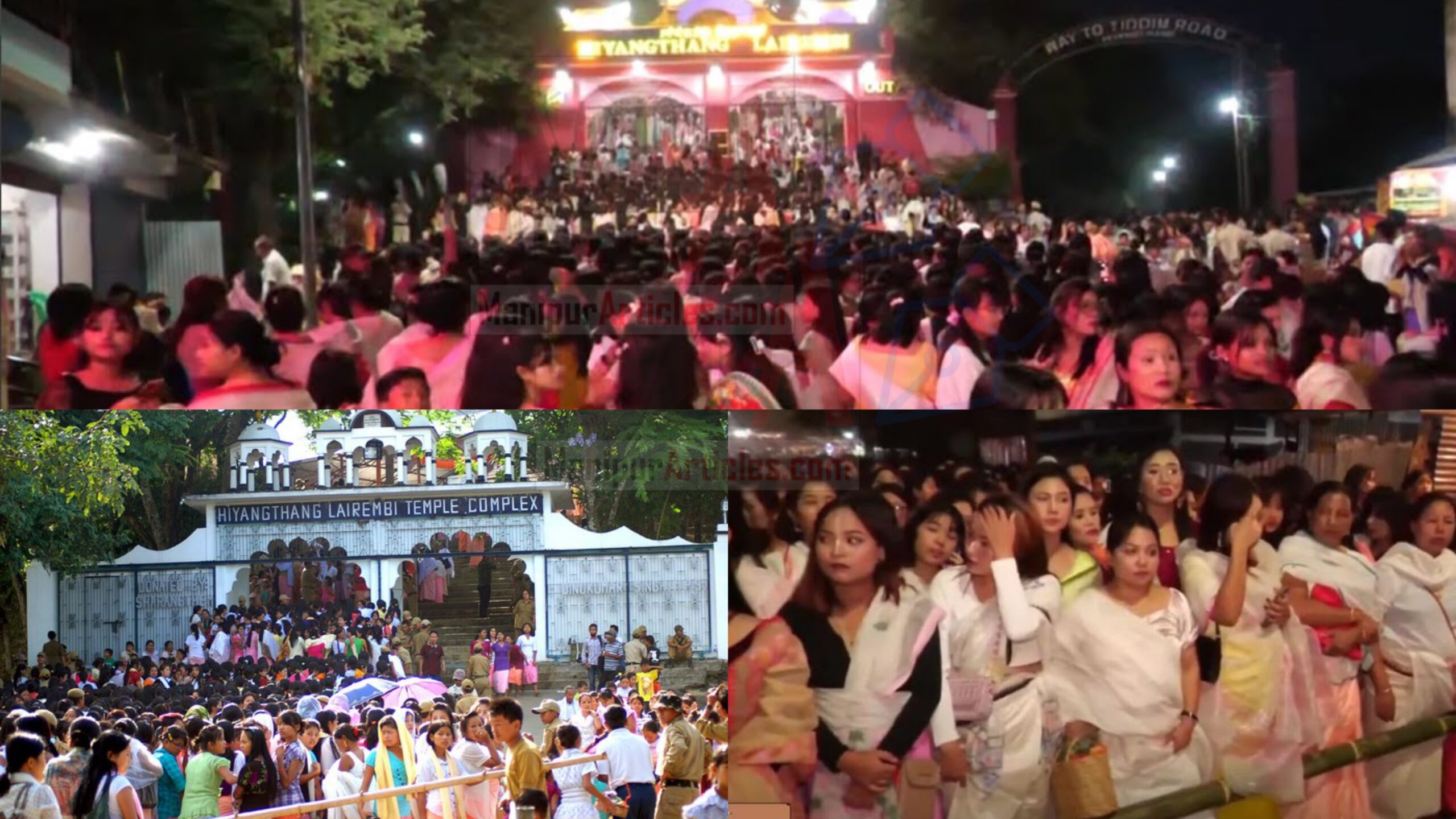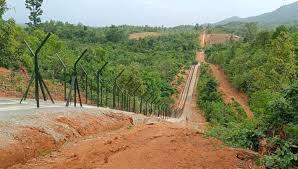Manipur: Thousands Gather at Dawn to Seek Boons from the Goddess — Inside Bor Puja at Hiyangthang Lairembi
At the break of dawn on Bor Day (Bor Numit), thousands of devotees — largely women — converged on Hiyangthang Lairembi Temple near Imphal to offer prayers and seek blessings from the goddess. The event, locally called Bor Puja or Bor Khurumba, fell on the third day of Durga Puja this year and is a rare cultural moment where Meitei traditions and Hindu rituals meet. Authorities managed crowd flow by admitting worshippers in organized groups, allowing devotees to maintain calm and devotion while offering their wishes at the shrine.
Bor Puja (also called Bor Numit or Bor Khurumba) translates roughly to “Boon Day.” The idea is straightforward: devotees come early, perform certain rites, and ask the goddess for blessings — be it for health, prosperity, a child, or simply peace of mind. The day is particularly important at Hiyangthang Lairembi Temple, where local belief holds that the goddess is especially receptive to sincere prayers on this date.
If you picture the temple grounds at dawn, imagine a slow-moving river of people — many wearing white or traditional saris, some carrying small baskets of offerings, others simply clasping their hands in prayer. Devotees began arriving from valley districts well before first light. The air often smells like incense and seasonal blooms, and the murmur of prayers forms a soft, continuous background hum. That’s the scene that dozens of local reporters captured this year as thousands thronged the Hiyangthang Lairembi Temple.
Devotees are normally admitted in managed batches (a local system sometimes called “Pou namba” or entry-by-groups), which helps avoid crushing crowds and preserves a calm environment for worship. Local volunteers, police, traffic officials and scouts coordinate the flow to make sure the experience remains serene and orderly even when the turnout is high. That organization — small, often invisible, and extremely practical — is what turns chaotic crowds into manageable devotion.
FAQs
Q1: What is Bor Puja and where is it mainly observed?
A: Bor Puja (Bor Numit or Bor Khurumba) is a “Boon Day” observance where devotees offer prayers to request blessings from the goddess, particularly at Hiyangthang Lairembi Temple near Imphal. The day combines Meitei traditional practices with many Hindu puja elements.
Q2: When does Bor Puja take place and how does it relate to Durga Puja?
A: Bor Puja commonly coincides with the early part of Durga Puja — often falling on the third day of Durga Puja depending on the lunar calendar. In 2025, Bor Day aligned with the Durga Puja observances, which added to the festival’s turnout.
Q3: Why do so many women attend Bor Puja?
A: Women often carry the role of ritual and household spiritual care, and Bor Puja functions as both a devotional and communal event. The temple’s morning rituals attract many women who come to pray for family welfare, health, and prosperity.
Q4: How is crowd control handled at the temple during Bor Puja?
A: Local authorities, temple committees, and volunteers organize devotees into groups for entry (often called “Pou namba”) and coordinate traffic and security to ensure a calm experience for worshippers. This organized admission helps prevent overcrowding and preserves the sanctity of the ritual.
Q5: Is the Hiyangthang Lairembi Temple historically significant?
A: Yes. The temple’s worship tradition dates back to at least the era of King Senbi Kiyamba (15th–16th century), and during King Pamheiba’s reign in the 18th century the goddess was identified with Kamakhya, which strengthened links between local Sanamahism and Hindu practices. The temple remains a major pilgrimage and cultural site in Manipur.




